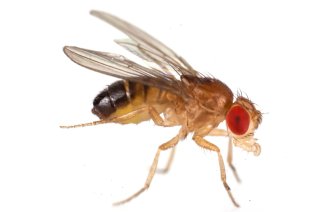
RP9 Identification and characterization of naturally occurring variation affecting reproductive diapause
This project will identify the genes and their molecular function(s) for diapause on a population scale in wild fruit fly populations. Expected evolutionary conservation will allow translation of this information to natural enemies as the ability to control diapause in these biocontrol agents will offers improved flexibility in rearing, storage and shipping.
The overwintering strategy differs among species. The fruit fly Drosophila melanogaster enters an ovarian reproductive diapause where females have immature ovaries. The parasitoid wasp Nasonia vitripennis, on the other hand, enters a larval diapause. The genetic basis of these ecologically extremely important traits is not yet understood. In this project we will use a population genetic approach, which takes advantage of the latest sequencing technology [1, 2] to map the genetic variants contributing to diapause in natural D. melanogaster and Nasonia vitripennis populations. The position is perfectly suited for candidates, who like to combine state of the art bioinformatic approaches with ecology and functional genetics.
- Schlötterer, C., et al. (2014) Sequencing pools of individuals - mining genome-wide polymorphism data without big funding. Nature reviews. Genetics 15, 749-763
- Bastide, H., et al. (2013) A genome-wide, fine-scale map of natural pigmentation variation in Drosophila melanogaster. PLoS genetics 9, e1003534
